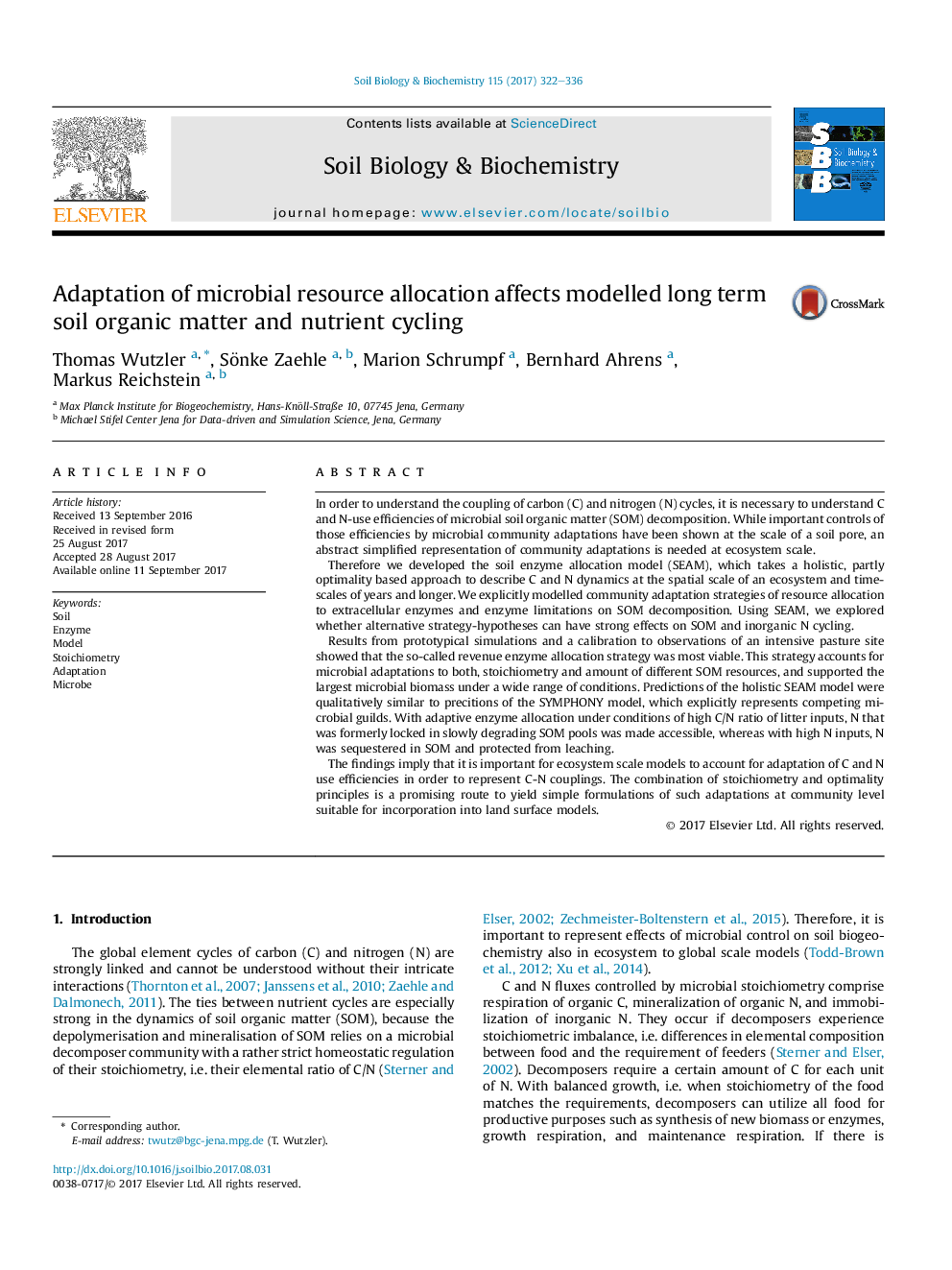| Article ID | Journal | Published Year | Pages | File Type |
|---|---|---|---|---|
| 5516253 | Soil Biology and Biochemistry | 2017 | 15 Pages |
â¢SEAM, a model of soil organic matter (SOM) cycling is presented.â¢Microbial community adaptation of enzyme production is modeled in an abstract holistic manner.â¢Simulated rhizosphere priming effects allow plants to liberate nitrogen (N) from SOM under N limitation.â¢Strong effects of decomposer community adaptation on C and N use efficiencies are shown.
In order to understand the coupling of carbon (C) and nitrogen (N) cycles, it is necessary to understand C and N-use efficiencies of microbial soil organic matter (SOM) decomposition. While important controls of those efficiencies by microbial community adaptations have been shown at the scale of a soil pore, an abstract simplified representation of community adaptations is needed at ecosystem scale.Therefore we developed the soil enzyme allocation model (SEAM), which takes a holistic, partly optimality based approach to describe C and N dynamics at the spatial scale of an ecosystem and time-scales of years and longer. We explicitly modelled community adaptation strategies of resource allocation to extracellular enzymes and enzyme limitations on SOM decomposition. Using SEAM, we explored whether alternative strategy-hypotheses can have strong effects on SOM and inorganic N cycling.Results from prototypical simulations and a calibration to observations of an intensive pasture site showed that the so-called revenue enzyme allocation strategy was most viable. This strategy accounts for microbial adaptations to both, stoichiometry and amount of different SOM resources, and supported the largest microbial biomass under a wide range of conditions. Predictions of the holistic SEAM model were qualitatively similar to precitions of the SYMPHONY model, which explicitly represents competing microbial guilds. With adaptive enzyme allocation under conditions of high C/N ratio of litter inputs, N that was formerly locked in slowly degrading SOM pools was made accessible, whereas with high N inputs, N was sequestered in SOM and protected from leaching.The findings imply that it is important for ecosystem scale models to account for adaptation of C and N use efficiencies in order to represent C-N couplings. The combination of stoichiometry and optimality principles is a promising route to yield simple formulations of such adaptations at community level suitable for incorporation into land surface models.
